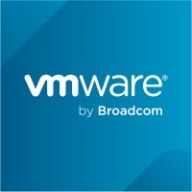

VMware vSAN and Sunlight compete in the hyper-converged infrastructure solutions category, focusing on high-performance storage and computing capabilities. VMware vSAN seems to have an edge due to its extensive integration with the VMware ecosystem and seamless storage solutions for virtual environments.
Features: VMware vSAN offers integration and scalability within VMware’s suite, robust data protection, deduplication, and compression. Sunlight provides a lightweight hypervisor, better storage performance, and lower resource consumption.
Ease of Deployment and Customer Service: VMware vSAN deployment integrates with existing VMware environments, offering ease through familiarity for users and comprehensive documentation. Its customer support is extensive due to VMware’s established network. Sunlight deployment focuses on simplicity and quick installation, ideal for rapid edge scenarios. Although responsive, its customer service lacks VMware’s global reach.
Pricing and ROI: VMware vSAN involves a significant setup cost associated with its comprehensive features, leading to a higher ROI within a VMware ecosystem. Sunlight provides a cost-effective solution with lower initial costs, offering strong ROI through efficient resource usage in specialized environments.
| Product | Market Share (%) |
|---|---|
| VMware vSAN | 11.4% |
| Sunlight | 0.5% |
| Other | 88.1% |


| Company Size | Count |
|---|---|
| Small Business | 100 |
| Midsize Enterprise | 58 |
| Large Enterprise | 129 |
Sunlight is a complete HCI stack that can be deployed on-premise on standard data center hardware, in AWS and on resource-constrained far-edge devices.
VMware vSAN is a software-defined storage product that is used in collaboration with VMware ESXi hypervisor and that provisions and manages storage based on policies, regardless of the underlying hardware. The solution enables you to prime your business for growth through its seamless evolution (it is integrated with vSphere and requires no new tools), its flexibility, and its multi-cloud capabilities. As an industry-leading software, VMware vSAN provides high levels of performance with minimal impact on CPU and memory.
VMware vSAN Features
VMware vSAN has many valuable key features. Some of the most useful ones include:
VMware vSAN Benefits
There are many benefits to implementing VMware vSAN. Some of the biggest advantages the solution offers include:
Reviews from Real Users
Below are some reviews and helpful feedback written by PeerSpot users currently using the VMware vSAN solution.
PeerSpot user Yves S., CEO, Cloud Evangelist at Comdivision Consulting GmbH, says, “vSAN gives us a lot of advantages when we need to expand resources. We have an overall larger host infrastructure, and we split that up for specific customer test and use cases. In that specific scenario, we can easily add more hosts or reduce the number of hosts in the environment.”
A reviewer who works in Infrastructure Security explains, “The ease of use is great. The initial setup and upgrade process was pretty straightforward. And, technical support is great.”
Laurent N., Director at Softlogic, comments, "The feature that I have found most valuable is that it is easy to deploy. It is easy to create and delete virtual servers. It is easy to create the load balancing and the clustering."
We monitor all HCI reviews to prevent fraudulent reviews and keep review quality high. We do not post reviews by company employees or direct competitors. We validate each review for authenticity via cross-reference with LinkedIn, and personal follow-up with the reviewer when necessary.